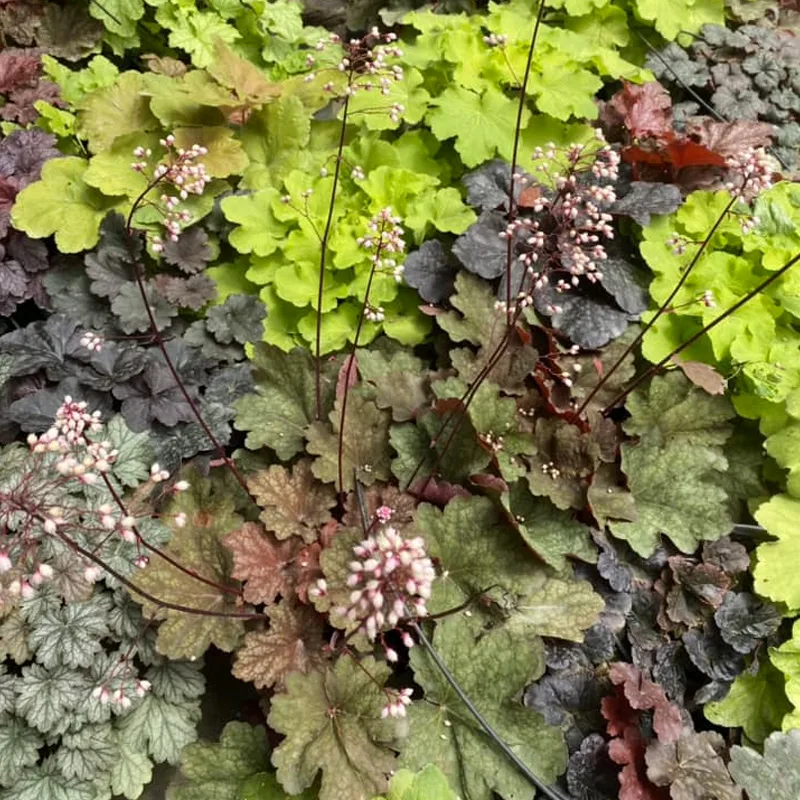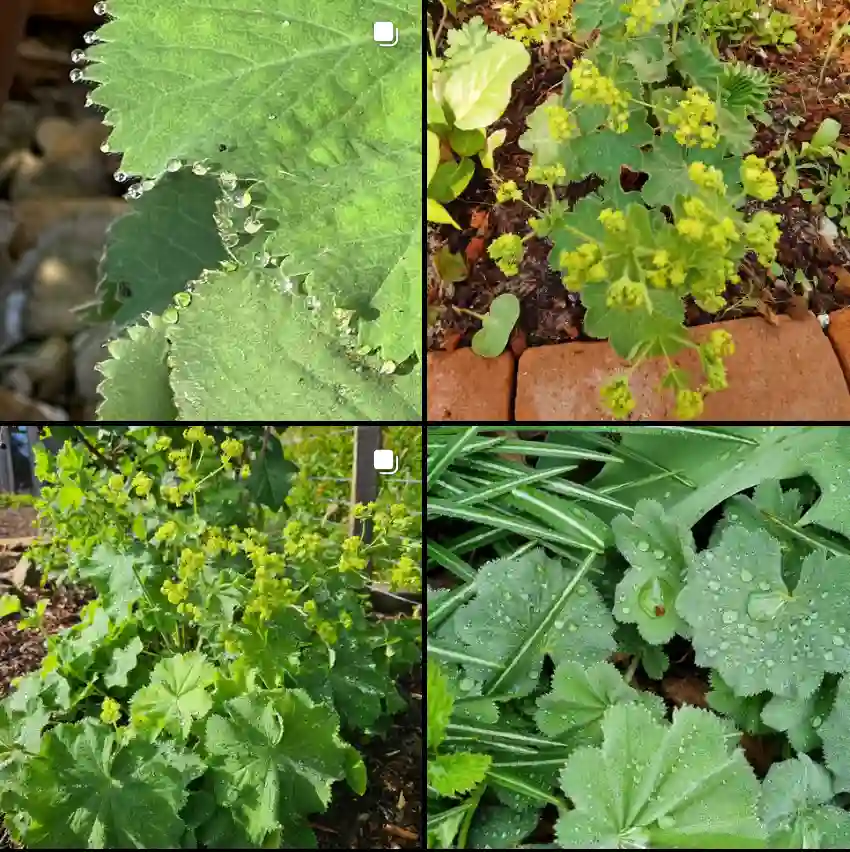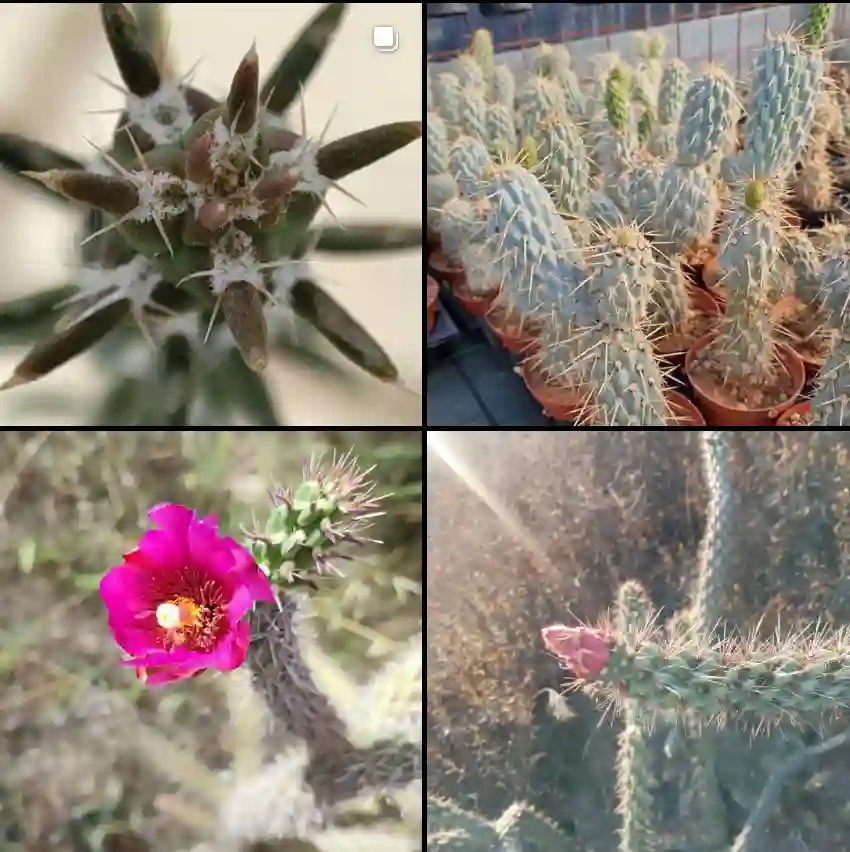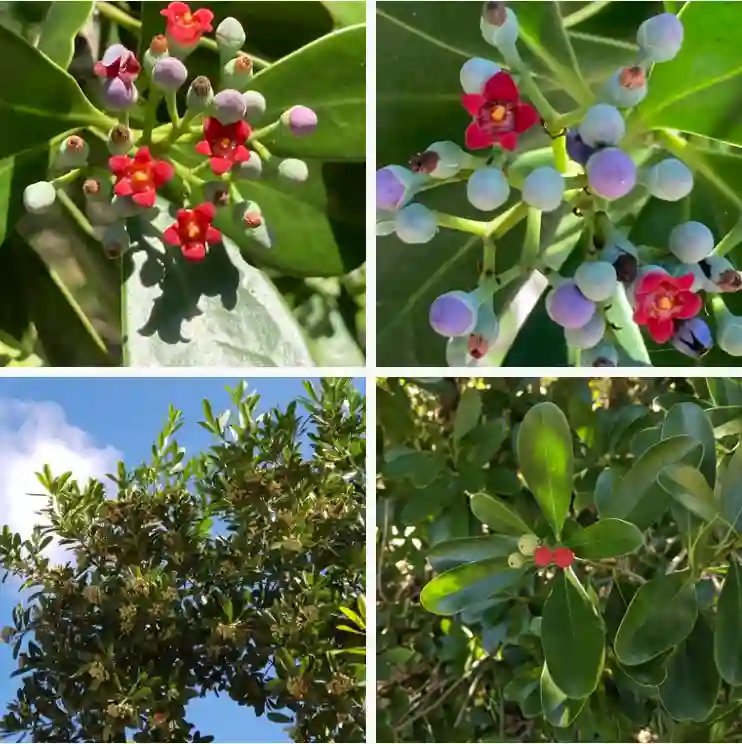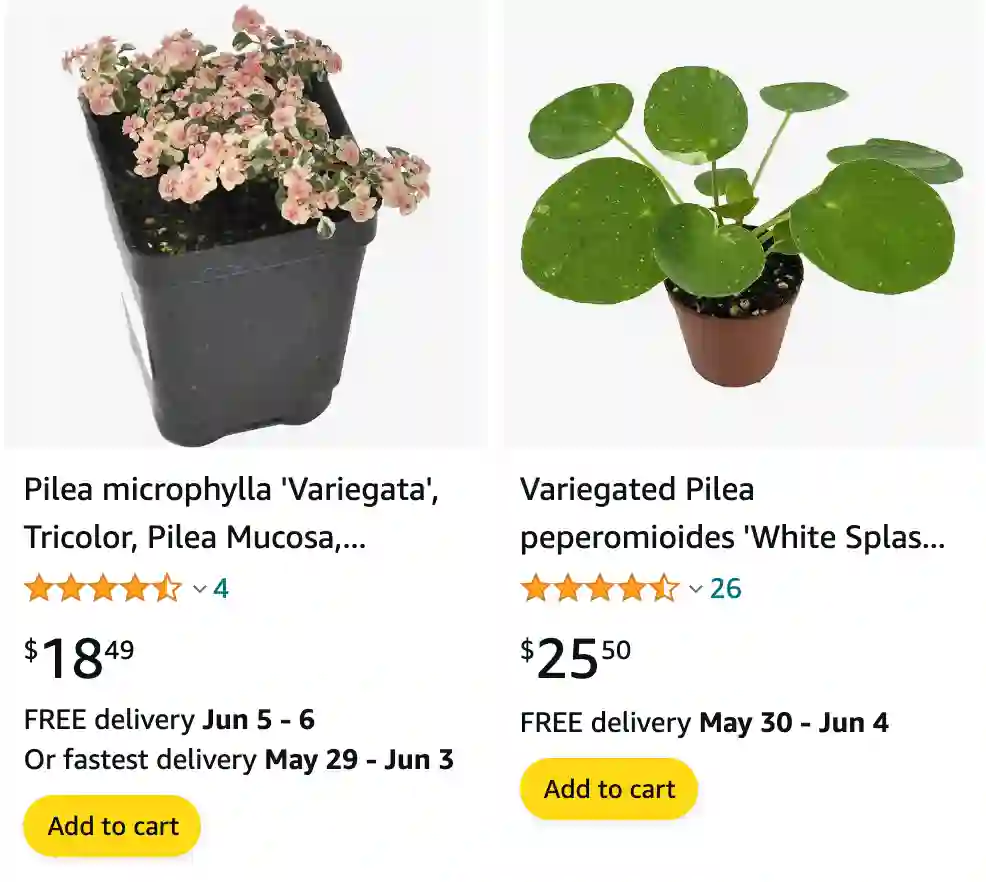
Exploring the Genus Pilea: A Plant Lover’s Perspective
As a passionate plant enthusiast, I’ve spent countless hours caring for, observing, and learning about plants. One genus that has consistently fascinated me is Pilea. Known for its diversity and adaptability, Pilea offers something for every indoor gardener, from the trendy Pilea peperomioides to lesser-known varieties. Let me take you on a journey through this remarkable genus, sharing insights and experiences along the way.
What is Pilea?
Pilea belongs to the Urticaceae family, a group of flowering plants with over 700 species. Native to tropical and subtropical regions, these plants are prized for their ornamental foliage, ease of care, and unique growth habits.
One of the reasons I love Pilea is its versatility. From trailing varieties perfect for hanging baskets to upright forms that make a statement on a shelf, there’s a Pilea for every spot in your home.
Pilea species
- Pilea abbreviata Urb. & Ekman
- Pilea acanthoides F.S.Cabral & Gaglioti
- Pilea acanthospermoides Urb. & Ekman
- Pilea acuminata Liebm.
- Pilea acunae Grudz.
- Pilea adamsiana A.K.Monro
- Pilea aenea Killip
- Pilea affinis C.V.Morton
- Pilea alaotrae Leandri
- Pilea alfaroana Al.Rodr. & A.K.Monro
- Pilea alongensis Gagnep.
- Pilea alpestris (Urb.) Fawc. & Rendle
- Pilea alpina Urb.
- Pilea alsinifolia Wedd.
- Pilea alta Gilli
- Pilea alternifolia Urb. & Ekman
- Pilea ambecarpa Urb.
- Pilea amplistipulata C.J.Chen
- Pilea andersonii C.D.Adams
- Pilea andringitrensis Leandri
- Pilea angolensis (Hiern) Rendle
- Pilea angulata (Blume) Blume
- Pilea angustata Killip
- Pilea angustifolia Killip
- Pilea anisophylla Wedd.
- Pilea ansincola Urb. & Ekman
- Pilea anthotricha Urb.
- Pilea antioquensis Killip
- Pilea aparadensis P.Brack
- Pilea apiculata Killip
- Pilea apoensis Elmer
- Pilea appendicilata Fawc. & Rendle
- Pilea approximata C.B.Clarke
- Pilea aquarum Dunn
- Pilea arbuscula Ridl.
- Pilea argentea Killip
- Pilea arguta (Kunth) Wedd.
- Pilea articulata Wedd.
- Pilea astrogramma Miq.
- Pilea atroviridis Baker
- Pilea attenuata Killip
- Pilea auricularis C.J.Chen
- Pilea auriculata Liebm.
- Pilea australis L.F.Fu & A.K.Monro
- Pilea balansae Gagnep.
- Pilea balfourii Baker
- Pilea baltenweckii Urb.
- Pilea bambuseti Engl.
- Pilea bambusifolia C.J.Chen
- Pilea barahonensis Urb.
- Pilea barbiflora Urb. & Ekman
- Pilea basicordata W.T.Wang
- Pilea bassleriana Killip
- Pilea baurii B.L.Rob.
- Pilea beguinotii Cufod.
- Pilea bemarivensis Leandri
- Pilea benguetensis C.B.Rob.
- Pilea betulifolia (Sw.) Wedd.
- Pilea bicolor Urb.
- Pilea bisepala H.St.John
- Pilea bissei Grudz.
- Pilea boehmerioides Wedd.
- Pilea boiviniana Wedd.
- Pilea borbonica Marais
- Pilea botterii Killip
- Pilea brachypila Urb.
- Pilea bracteosa Wedd.
- Pilea bradei J.F.Soares
- Pilea brasiliensis Gaglioti, Romaniuc & A.K.Monro
- Pilea brassii Chew ex P.Royen
- Pilea brevicornuta Hayata
- Pilea brevipetiolata Urb. & Ekman
- Pilea brevistipula Urb.
- Pilea brittoniae Urb.
- Pilea buchenavii Urb.
- Pilea buchtienii Killip
- Pilea bullata Britton
- Pilea butaudiana Lorence & W.L.Wagner
- Pilea cacuminum Urb. & Ekman
- Pilea cadetii Marais
- Pilea cadierei Gagnep. & Guillaumin
- Pilea caespitosa Urb.
- Pilea calcicola C.B.Rob.
- Pilea callicometes Leandri
- Pilea cangyuanensis H.W.Li
- Pilea capitata Baker
- Pilea capitellata Wedd.
- Pilea carautae M.D.M.Vianna & R.J.V.Alves
- Pilea cardiophylla Urb.
- Pilea caribaea Urb.
- Pilea carnosa Britton
- Pilea carnosula Wedd.
- Pilea castronis Killip
- Pilea cataractae Marais
- Pilea caudata H.J.P.Winkl.
- Pilea caulescens (L.) Urb.
- Pilea cavaleriei H.Lév.
- Pilea cavernicola A.K.Monro, C.J.Chen & Y.G.Wei
- Pilea celebica Miq.
- Pilea cellulosa (Spreng.) Urb.
- Pilea centradenioides Seem.
- Pilea cephalantha Wedd.
- Pilea cephalophora Urb.
- Pilea ceratocalyx Wedd.
- Pilea chamaesyce Urb. & Ekman
- Pilea chartacea C.J.Chen
- Pilea chiapensis Killip
- Pilea chotardiana Urb. & Ekman
- Pilea christii Urb.
- Pilea ciliata (Sw.) Blume
- Pilea citriodora Wedd.
- Pilea clandestina Wedd.
- Pilea clarana Urb.
- Pilea clarkei Hook.f.
- Pilea clementis Britton
- Pilea cocottei Marais
- Pilea confusa C.V.Morton
- Pilea conjugalis A.K.Monro
- Pilea consanguinea Wedd.
- Pilea cordifolia Hook.f.
- Pilea cordistipulata C.J.Chen
- Pilea cornutocucullata Cufod.
- Pilea corona A.K.Monro
- Pilea coronopifolia Urb. & Ekman
- Pilea corymbosa (Savigny) Blume
- Pilea costaricensis Donn.Sm.
- Pilea costata Killip
- Pilea cowellii Britton
- Pilea craspedodroma A.K.Monro
- Pilea crassifolia (Willd.) Blume
- Pilea crenata Britton & P.Wilson
- Pilea crenulata (Sw.) Urb.
- Pilea cruegeriana Wedd.
- Pilea cubensis Wedd.
- Pilea cuneata H.J.P.Winkl.
- Pilea cuneiformis (Savigny) Wedd.
- Pilea cuprea K.Krause
- Pilea cushiensis Killip
- Pilea cyclophylla Urb. & Ekman
- Pilea cymbifolia Rusby
- Pilea daguensis Killip
- Pilea danxiaensis L.F.Fu, A.K.Monro & Y.G.Wei
- Pilea dataensis C.B.Rob.
- Pilea dauciodora Pav. ex Wedd.
- Pilea delicatula Killip
- Pilea densiflora Kunth
- Pilea depressa (Sw.) Blume Plant FAQs: Pilea Depressa
- Pilea diandra Urb.
- Pilea dictyocarpa Urb.
- Pilea diffusa (Sw.) Wedd.
- Pilea digitata A.K.Monro
- Pilea discolor Killip
- Pilea dispar Urb.
- Pilea distantifolia Urb.
- Pilea diversifolia Wedd.
- Pilea dolichocarpa C.J.Chen
- Pilea dombeyana Wedd.
- Pilea domingensis Urb.
- Pilea ecboliophylla Donn.Sm.
- Pilea effusa H.J.P.Winkl.
- Pilea ekmanii Urb.
- Pilea elegans Gay
- Pilea elegantissima C.J.Chen
- Pilea elizabethae Fawc. & Rendle
- Pilea elliptica Hook.f.
- Pilea elliptilimba C.J.Chen
- Pilea entradana Philipson
- Pilea ermitensis Britton
- Pilea erosa Urb.
- Pilea fairchildiana Jestrow & Jiménez Rodr.
- Pilea falcata Liebm.
- Pilea fallax Wedd.
- Pilea fasciata Wedd.
- Pilea fendleri Killip
- Pilea filicina Killip
- Pilea filipes Rusby
- Pilea flammula P.Brack
- Pilea flavicaulis Urb. & Britton
- Pilea flexuosa Wedd.
- Pilea floridana Urb.
- Pilea foetida Urb. & Ekman
- Pilea foliosa Killip
- Pilea fontana (Lunell) Rydb.
- Pilea foreroi A.H.Gentry
- Pilea forgetii N.E.Br.
- Pilea formonensis Urb. & Ekman
- Pilea formosa Urb.
- Pilea forsythiana Wedd.
- Pilea frutescens Urb.
- Pilea fruticosa Hook.f.
- Pilea fruticulosa C.V.Morton
- Pilea funkikensis Hayata
- Pilea gallowayana Killip
- Pilea gamboana Al.Rodr. & A.K.Monro
- Pilea gansuensis C.J.Chen & Z.X.Peng
- Pilea geminata Urb.
- Pilea gesnerioides Grudz.
- Pilea glaberrima (Blume) Blume
- Pilea glabra S.Watson
- Pilea glomerata Griseb.
- Pilea gnidioides Griseb.
- Pilea godetiana Urb. & Ekman
- Pilea goetzei Engl.
- Pilea gomeziana W.C.Burger
- Pilea gongjueensis W.T.Wang
- Pilea goudotiana Wedd.
- Pilea gracilior Urb. & Ekman
- Pilea gracilis Hand.-Mazz.
- Pilea grandifolia (L.) Blume Plant FAQs: Pilea Grandifolia
- Pilea granmae Grudz.
- Pilea granulata Urb. & Ekman
- Pilea griffithii Blume
- Pilea guirana Urb.
- Pilea guizhouensis A.K.Monro, C.J.Chen & Y.G.Wei
- Pilea gyrophylla Urb.
- Pilea haenkei Killip
- Pilea hamaoi Makino
- Pilea harrisii Urb.
- Pilea hedemarkii W.N.Takeuchi
- Pilea helwigii Urb. & Ekman
- Pilea helxinoides Ridl.
- Pilea hemisphaerica Urb. & Ekman
- Pilea hepatica Urb. & Ekman
- Pilea herniarioides (Sw.) Lindl.
- Pilea herrerae Al.Rodr. & A.K.Monro
- Pilea heteroneura Griseb.
- Pilea hexagona C.J.Chen
- Pilea hilariana Wedd.
- Pilea hirsuta Wedd.
- Pilea hirtella Miq.
- Pilea hispaniolana Acev.-Rodr.
- Pilea hitchcockii Killip
- Pilea holstii Engl.
- Pilea hookeriana Wedd.
- Pilea howardiana Skean & Judd
- Pilea howelliana Hand.-Mazz.
- Pilea humbertii Leandri
- Pilea humilis C.B.Rob.
- Pilea hyalina Fenzl
- Pilea hydra P.Brack
- Pilea hydrocotyliflora Killip
- Pilea hygrophila (Miq.) Blume
- Pilea imparifolia Wedd.
- Pilea impressa Urb.
- Pilea inaequalis (Juss. ex Poir.) Wedd.
- Pilea insolens Wedd.
- Pilea intermedia (Wedd.) Urb.
- Pilea intumescens C.B.Rob.
- Pilea involucrata (Sims) C.H.Wright & Dewar
- Pilea irrorata Donn.Sm.
- Pilea iteophylla Urb. & Ekman
- Pilea ivohibeensis Leandri
- Pilea jamesoniana Wedd.
- Pilea jayaensis A.K.Monro
- Pilea jeremiensis Urb. & Ekman
- Pilea johniana Stapf
- Pilea johnsii A.K.Monro
- Pilea johnstonii Oliv.
- Pilea jujuyensis Sorarú
- Pilea kakurang Blume
- Pilea kanaii H.Hara
- Pilea killipiana Standl. & Steyerm.
- Pilea kingii C.E.C.Fisch.
- Pilea kiotensis Ohwi
- Pilea klossii A.K.Monro
- Pilea krugii Urb.
- Pilea laciniata Urb.
- Pilea lacorum P.Royen
- Pilea laevicaulis Wedd.
- Pilea lageensis W.T.Wang
- Pilea lamii H.J.P.Winkl.
- Pilea lamiifolia Fawc. & Rendle
- Pilea lamioides Wedd.
- Pilea lanceolata (Savigny) Wedd.
- Pilea lancifolia Hook.f.
- Pilea lapestris Chew ex A.K.Monro
- Pilea latifolia Wedd.
- Pilea laurea C.D.Adams
- Pilea laxa (Sw.) Wedd.
- Pilea ledermannii H.J.P.Winkl.
- Pilea leptocardia Urb.
- Pilea leptogramma Urb.
- Pilea leptophylla Urb.
- Pilea leucophaea (Blume) Blume
- Pilea libanensis Urb.
- Pilea lindeniana Wedd.
- Pilea linearifolia C.J.Chen
- Pilea lippioides Killip
- Pilea lobulata Urb.
- Pilea loeseneri Urb. & Ekman
- Pilea loheri Merr.
- Pilea lokohensis Leandri
- Pilea lomatogramma Hand.-Mazz.
- Pilea longibracteolata Al.Rodr., A.K.Monro & L.Acosta
- Pilea longicaulis Hand.-Mazz.
- Pilea longifolia Baker
- Pilea longipedunculata S.S.Chien & C.J.Chen
- Pilea longruiensis W.T.Wang
- Pilea longzhouensis W.T.Wang
- Pilea losensis Killip
- Pilea loshanensis S.S.Ying
- Pilea lucens (Savigny) Wedd.
- Pilea lucida (Sw.) Blume
- Pilea luisiana Urb. & Ekman
- Pilea luochengensis W.T.Wang
- Pilea lurida C.Wright
- Pilea lushuiensis W.T.Wang
- Pilea luzonensis Merr.
- Pilea macbridei Killip
- Pilea macrantha Killip
- Pilea macrocarpa C.J.Chen
- Pilea macrocystolithica Killip
- Pilea maculata Urb. & Ekman
- Pilea magnicarpa A.K.Monro
- Pilea manniana Wedd.
- Pilea margarettae Britton
- Pilea marginata Wedd.
- Pilea martini (H.Lév.) Hand.-Mazz.
- Pilea matama A.K.Monro
- Pilea matheuxiana Urb. & Ekman
- Pilea matsudae Yamam.
- Pilea matthewii Dorr & Stergios
- Pilea maxonii Britton
- Pilea mayarensis C.V.Morton
- Pilea media C.J.Chen
- Pilea mediophylla Gilli
- Pilea medongensis C.J.Chen
- Pilea melastomoides (Poir.) Wedd.
- Pilea menghaiensis C.J.Chen
- Pilea mexicana Wedd.
- Pilea michaelensis P.Royen
- Pilea microcardia Hand.-Mazz.
- Pilea micromeriifolia Britton & P.Wilson
- Pilea microphylla (L.) Liebm. Plant FAQs: Pilea Microphylla
- Pilea microrhombea Urb.
- Pilea miguelii Dorr & Stergios
- Pilea mimema Standl. & Steyerm.
- Pilea minguetii Urb.
- Pilea minima W.T.Wang
- Pilea minuta C.B.Clarke
- Pilea minutiflora K.Krause
- Pilea minutissima H.J.P.Winkl.
- Pilea mollis Wedd. Plant FAQs: Pilea Mollis – Moon Valley Pilea
- Pilea mongolica Wedd.
- Pilea monilifera Hand.-Mazz.
- Pilea monticola C.B.Rob.
- Pilea montis-wilhelmi P.Royen
- Pilea moragana Al.Rodr. & A.K.Monro
- Pilea moroniana Urb.
- Pilea multicaulis Urb.
- Pilea multicellularis C.J.Chen
- Pilea multiflora (Poir.) Wedd.
- Pilea mutisiana (Spreng.) Wedd.
- Pilea myriantha Killip
- Pilea myriophylla Killip
- Pilea nana Liebm.
- Pilea napoana Gilli
- Pilea neglecta Britton
- Pilea nerteroides Killip
- Pilea nguruensis Friis & I.Darbysh.
- Pilea nicholasii Dorr & Stergios
- Pilea nidiae Dorr & Stergios
- Pilea nigrescens Urb.
- Pilea nipensis Urb.
- Pilea nitida Wedd.
- Pilea nonggangensis Y.G.Wei, L.F.Fu & A.K.Monro
- Pilea notata C.H.Wright
- Pilea nudicaulis (Sw.) Wedd.
- Pilea nummulariifolia (Sw.) Wedd. Plant FAQs: Pilea Nummulariifolia – Creeping Charlie
- Pilea nutans Wedd.
- Pilea obetiifolia Killip
- Pilea oblanceolata Fawc. & Rendle
- Pilea obscura C.V.Morton
- Pilea obtusangula Urb.
- Pilea occulta J.Florence
- Pilea ophioderma Killip
- Pilea ophiticola Borhidi
- Pilea ordinata C.D.Adams
- Pilea orientalis C.V.Morton
- Pilea ornatifolia Killip
- Pilea ovalifolia Britton & P.Wilson
- Pilea ovalis Griseb.
- Pilea oxyodon Wedd.
- Pilea pachycarpa Wedd.
- Pilea pachycephala Urb.
- Pilea pallida Killip
- Pilea palustris Urb.
- Pilea pandurata P.Royen
- Pilea paniculigera C.J.Chen
- Pilea pansamalana Donn.Sm.
- Pilea panzhihuaensis C.J.Chen, A.K.Monro & L.Chen
- Pilea papuana H.J.P.Winkl.
- Pilea parciflora Urb.
- Pilea parietaria (L.) Blume
- Pilea pauciflora C.J.Chen
- Pilea pauciserrata Killip
- Pilea pavonii Wedd.
- Pilea pedroi Grudz.
- Pilea peladerosi Grudz.
- Pilea pellionioides C.J.Chen
- Pilea peltata Hance
- Pilea pennellii Killip
- Pilea penninervis C.J.Chen
- Pilea peperomioides Diels Plant FAQs: Pilea Peperomioides – Chinese Money Plant
- Pilea peploides (Gaudich.) Hook. & Arn.
- Pilea perfragilis Ekman
- Pilea perrieri Leandri
- Pilea phaeocarpa Urb.
- Pilea pichisana Killip
- Pilea picta Herzog
- Pilea pitresia Urb. & Ekman
- Pilea pittieri Killip
- Pilea plataniflora C.H.Wright
- Pilea pleuroneura Donn.Sm.
- Pilea plicatidentata H.J.P.Winkl.
- Pilea plumieri Urb.
- Pilea plumulosa A.K.Monro
- Pilea poeppigiana Wedd.
- Pilea pollicaris Marais
- Pilea polyclada Urb.
- Pilea portlandiana C.D.Adams
- Pilea proctorii C.D.Adams
- Pilea propinqua Wedd.
- Pilea pseudonotata C.J.Chen
- Pilea psilogyne Urb.
- Pilea pteridophylla A.K.Monro
- Pilea pterocaulis Stapf
- Pilea pteropodon Wedd.
- Pilea pubescens Liebm.
- Pilea pulchra C.V.Morton
- Pilea pulegifolia (Poir.) Wedd.
- Pilea pumila A.Gray Plant FAQs: Pilea Pumila
- Pilea pumileoides Urb.
- Pilea punctata (Kunth) Wedd.
- Pilea puracensis Killip
- Pilea purpurea Killip
- Pilea purulensis Donn.Sm.
- Pilea pusilla K.Krause
- Pilea putridicola Urb. & Ekman
- Pilea pyrrhotricha Miq.
- Pilea quadrata A.K.Monro
- Pilea quercifolia Killip
- Pilea racemiformis C.J.Chen
- Pilea racemosa (Royle) Tuyama
- Pilea radicans (Sw.) Wedd.
- Pilea radiculosa Urb.
- Pilea ramosissima Killip
- Pilea receptacularis C.J.Chen
- Pilea refracta Urb.
- Pilea repanda Wedd.
- Pilea reticulata (Sw.) Wedd.
- Pilea rhexioides Liebm.
- Pilea rhizobola Miq.
- Pilea rhombea (L.f.) Liebm.
- Pilea rhombifolia Killip
- Pilea richardii Urb.
- Pilea riedlei (Decne.) Blume
- Pilea rigida C.B.Rob.
- Pilea rigidiuscula C.B.Rob.
- Pilea riopalenquensis A.H.Gentry & Dodson
- Pilea riparia Donn.Sm.
- Pilea rivoriae Wedd.
- Pilea rivularis Wedd.
- Pilea robinsonii Elmer
- Pilea robusta Liebm.
- Pilea roemeri H.J.P.Winkl.
- Pilea rojasiana Killip
- Pilea rostellata C.J.Chen
- Pilea rostulata A.K.Monro
- Pilea rotundata Griseb.
- Pilea rotundinucula Hayata
- Pilea rubiacea Ridl.
- Pilea rubriflora C.H.Wright
- Pilea rufa (Sw.) Wedd.
- Pilea rufescens Fawc. & Rendle
- Pilea rugosa (Sw.) Wedd.
- Pilea rugosissima Killip
- Pilea rusbyi (Britton) Killip
- Pilea salentana Killip
- Pilea salwinensis (Hand.-Mazz.) C.J.Chen
- Pilea samanensis Urb.
- Pilea sanctae-crucis Liebm.
- Pilea sancti-johannis J.Florence
- Pilea saxicola Urb.
- Pilea scandens Killip
- Pilea schimpffii Diels
- Pilea schlechteri H.J.P.Winkl.
- Pilea scripta (Buch.-Ham. ex D.Don) Wedd.
- Pilea selbyanorum Dodson & A.H.Gentry
- Pilea selleana Urb.
- Pilea semidentata (Juss. ex Poir.) Wedd.
- Pilea semisessilis Hand.-Mazz.
- Pilea senarifolia Donn.Sm.
- Pilea serpyllacea (Kunth) Liebm. Plant FAQs: Pilea Serpyllacea Globosa
- Pilea serpyllifolia (Poir.) Wedd.
- Pilea serratifolia Wedd.
- Pilea serrulata (Sw.) Wedd.
- Pilea sessiliflora (Sw.) Wedd.
- Pilea sessilifolia (Savigny) Wedd.
- Pilea setigera Urb.
- Pilea sevillensis Britton
- Pilea shaferi Britton & P.Wilson ex León & Alain
- Pilea shizongensis A.K.Monro, C.J.Chen & Y.G.Wei
- Pilea siguaneana Britton
- Pilea silvicola Fawc. & Rendle
- Pilea simplex Urb.
- Pilea sinocrassifolia C.J.Chen
- Pilea sinofasciata C.J.Chen
- Pilea skutchii Killip
- Pilea solandri (Seem.) J.Florence
- Pilea somae Hayata
- Pilea spathulata Griseb.
- Pilea spathulifolia Groult
- Pilea sphenophylla Urb.
- Pilea spinulosa C.J.Chen
- Pilea spruceana Wedd. Plant FAQs: Pilea Spruceana
- Pilea squamosa C.J.Chen
- Pilea squamulata Urb. & Ekman
- Pilea stapfiana Gibbs
- Pilea stellarioides H.J.P.Winkl.
- Pilea stelluligera Wedd.
- Pilea stenoneura H.J.P.Winkl.
- Pilea stenophylla Urb.
- Pilea stolonifera (Sw.) Wedd.
- Pilea striata Urb.
- Pilea strigillosa Urb. & Ekman
- Pilea strigosa Wedd.
- Pilea subamplexicaulis Killip
- Pilea subcoriacea (Hand.-Mazz.) C.J.Chen
- Pilea subedentata C.J.Chen
- Pilea subintegerrima (Griseb.) Greuter & R.Rankin
- Pilea sublobata Rusby
- Pilea sublucens Wedd.
- Pilea submissa Wedd.
- Pilea succulenta Wedd.
- Pilea suffruticosa K.Krause
- Pilea sumideroensis Britton
- Pilea supersedens (Leandri) Leandri
- Pilea suta C.D.Adams
- Pilea swinglei Merr.
- Pilea sykesii (J.Florence) L.F.Fu & A.K.Monro
- Pilea sylvatica Elmer
- Pilea symmeria Wedd.
- Pilea tabularis C.C.Berg
- Pilea taiwanensis S.S.Ying
- Pilea tatamensis Killip
- Pilea tatei Killip
- Pilea tenebrosa F.S.Cabral & Gaglioti
- Pilea tenerrima Miq.
- Pilea ternifolia Wedd.
- Pilea tetraphylla (Steud.) Blume
- Pilea tetrapoda Killip
- Pilea thouarsiana Wedd.
- Pilea thymoidea H.J.P.Winkl.
- Pilea tilarana W.C.Burger
- Pilea tippenhaueri Urb.
- Pilea tobagensis Urb.
- Pilea topensis Diels
- Pilea torbeciana Urb. & Ekman
- Pilea trianthemoides (Sw.) Lindl.
- Pilea trichomanophylla A.K.Monro
- Pilea trichosanthes Wedd.
- Pilea trichotoma Liebm.
- Pilea tridentata Killip
- Pilea trilobata (Savigny) Wedd.
- Pilea tripartita A.K.Monro
- Pilea triradiata Killip
- Pilea troyensis Fawc. & Rendle
- Pilea truncata Urb.
- Pilea tsaratananensis Leandri
- Pilea tsiangiana F.P.Metcalf
- Pilea tungurahuae Killip
- Pilea tutensis A.K.Monro
- Pilea ulei Killip
- Pilea umbellata (Bory) Wedd.
- Pilea umbriana Killip
- Pilea umbrosa Wedd. ex Blume
- Pilea unciformis C.J.Chen
- Pilea uninervis Griseb.
- Pilea urticella Wedd.
- Pilea urticifolia (L.f.) Blume
- Pilea usambarensis Engl.
- Pilea valenzuelae Urb.
- Pilea variegata Seem.
- Pilea vegasana Killip
- Pilea venulosa Blume
- Pilea verbascifolia (Savigny) Wedd.
- Pilea vermicularis Majure, Skean & Judd
- Pilea verrucosa Killip
- Pilea versteegii H.J.P.Winkl.
- Pilea victoriae V.Suresh & Sojan
- Pilea victoriensis P.Royen
- Pilea villicaulis Hand.-Mazz.
- Pilea virgata Wedd.
- Pilea vulcanica Liebm.
- Pilea weberbaueri Killip
- Pilea weddellii Fawc. & Rendle
- Pilea weimingii Huan C.Wang
- Pilea wightii Wedd.
- Pilea wilsonii Urb.
- Pilea wollastonii A.K.Monro
- Pilea wrightiana Wedd.
- Pilea wullschlaegelii Urb.
- Pilea yarensis Britton & P.Wilson
- Pilea yingshaoyaoana S.S.Ying
- Pilea yuanbaoshanica W.T.Wang
- Pilea yunckeri C.D.Adams
- Pilea yunquensis (Urb.) Britton & P.Wilson
- Pilea zaranensis P.Royen
How to care for pilea?
Caring for my Pilea has been a learning experience. I’ve found they thrive best in bright, indirect light and need to be watered when the top inch of soil feels dry. I also make sure to rotate the pot every few days so the plant grows evenly. Occasionally, I mist the leaves to maintain humidity, especially during the winter when indoor air can get very dry. Fertilizing monthly with a balanced houseplant fertilizer during the growing season has kept my Pileas looking lush and healthy.
How to propagate pilea?
When I wanted to propagate my Pilea, I was thrilled to see how easy it was. I gently removed the little offshoots, or “pups,” that sprout at the base of the plant. After letting the cut end callous over for a day or two, I planted them in moist soil and placed them in a bright spot with indirect light. Keeping the soil consistently moist (but not soggy) helped the new plants establish roots. It’s so rewarding to see these new plants grow and thrive!
Is pilea toxic to cats?
I was relieved to learn that Pilea plants are not toxic to cats. My cat loves to investigate all my plants, and I’m always worried about his safety. Knowing that the Pilea is safe means I can keep them around the house without fear. This makes Pileas a great option for pet owners who want to add some greenery to their homes without risking their furry friends’ health.
How often to water pilea?
Watering my Pilea is something I had to get just right. I water mine about once a week, but I always check the soil first. If it feels dry about an inch down, it’s time to water. During the winter, I find they need a little less water, so I adjust accordingly. It’s all about keeping the soil lightly moist but never waterlogged.
Why is my pilea drooping?
When my Pilea started drooping, I initially panicked but soon learned it was usually a sign of underwatering. Once I gave it a good drink, it perked right up within a few hours. Occasionally, drooping can also mean the plant needs more light or even a bit of a rest after rapid growth. It’s amazing how quickly they bounce back once you address their needs.
Why are my pilea leaves curling?
Curling leaves on my Pilea were a sign that something was off. I discovered it could be due to inconsistent watering, too much direct sunlight, or even pests. Adjusting my watering routine and moving the plant to a spot with more indirect light helped a lot. Keeping an eye on the leaves has been a good indicator of the plant’s overall health.
Why is my pilea turning yellow?
When my Pilea’s leaves started turning yellow, I knew something needed to change. It was often a sign of overwatering, so I cut back a bit and made sure the pot had proper drainage. Sometimes, yellowing leaves can also mean the plant isn’t getting enough light, so I moved it to a brighter spot. Regularly checking the soil moisture and light conditions has kept my Pilea’s foliage vibrant and green.
Can pilea grow in water?
Growing Pilea in water was an experiment I tried with some of the pups I propagated. I placed the cuttings in a glass jar with water, making sure only the roots were submerged. They actually did quite well, sprouting new roots within a few weeks. While they can grow in water for a while, I eventually transferred them to soil for better long-term growth. It’s a fun way to watch the root development up close!
When to repot pilea?
Repotting my Pilea was necessary when I noticed it outgrowing its current pot and roots poking out of the drainage holes. I usually do this every year or when the plant seems too crowded. Spring is the best time to repot, as the plant is entering its growing season. I carefully transfer it to a slightly larger pot with fresh soil, making sure to handle the roots gently to avoid shock.
How to repot pilea?
Repotting my Pilea involved a few careful steps. First, I gently removed the plant from its old pot, loosening the soil around the roots. Then, I placed it in a new pot with fresh potting mix, making sure it was at the same depth as before. After filling in the gaps with more soil, I watered it thoroughly and let it settle in its new home. Giving it a good drink after repotting helps reduce transplant shock and gets the plant off to a good start in its new pot.
Conclusion: The Pilea Obsession
In conclusion, the genus Pilea has earned its place in my plant family, and I can’t recommend it enough to anyone looking to add a touch of charm to their indoor spaces. Its diversity ensures there’s always something new to explore, making it a lifelong favorite in my collection.

